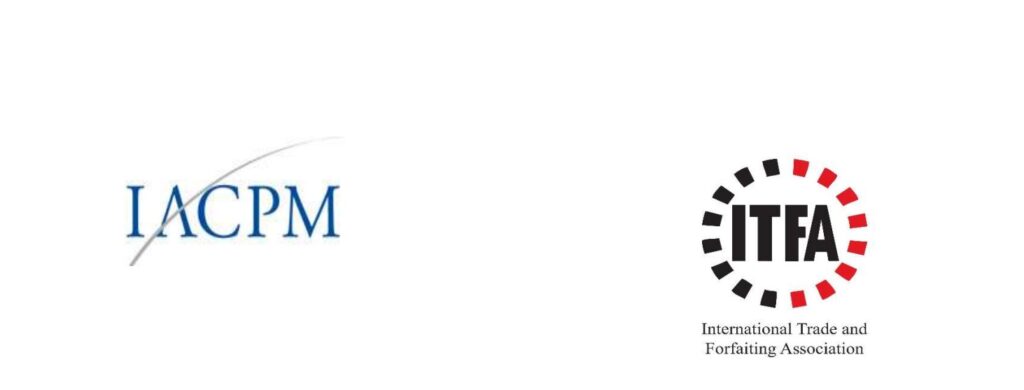-
 ITFA represents the rights and interests of banks, financial institutions and service providers involved in trade risk and asset origination and distribution.Our Mission
ITFA represents the rights and interests of banks, financial institutions and service providers involved in trade risk and asset origination and distribution.Our Mission

Collaboration between the International Trade and Forfaiting Association and the International Association of Credit Portfolio Managers, June 2023
This paper is a collaboration between the International Trade and Forfaiting Association (“ITFA”) and the International Association of Credit Portfolio Managers (“IACPM”). ITFA is a trade association focused on global trade, forfaiting, supply chain, receivables financing, and risk mitigation thereof. Its members include banks, insurers, insurance brokers, lawyers, and others engaged in supporting global trade. The IACPM is an industry association that represents the world’s largest banks and teams within those institutions who have responsibility for the prudential management of credit portfolios, including actively controlling concentrations, adding diversification, managing the return of the portfolio relative to the risk, and applying capital to new lending. In addition, its members also include investors, insurers, and reinsurers, which participate in credit risk transfer transactions.
EXECUTIVE SUMMARY
Capital rules encourage banks to balance their portfolios with a healthy distribution of assets across various asset classes and to maintain capital reserves to protect against economic downturns. Similarly, capital risk weight substitution rules encourage banks to seek out strong counterparties for their unfunded risk mitigation strategy. One tool that banks can use to mitigate and diversify their credit risk is credit insurance. Credit insurance is a type of insurance that protects businesses against losses due to the non-payment of trade debts by their customers. By purchasing credit insurance, banks can reduce their risk exposure to non-payment of trade debts.
Under the current US capital rules, credit insurance issued by financially strong insurers is a permitted form of eligible guarantee. However, banks generally cannot obtain meaningful capital risk weight substitution benefits from such policies because insurers are not recognized as lower-risk counterparties compared to any other corporate entities. This gives rise to a concern that US banks lack access to a risk mitigation tool that is expressly contemplated by the US capital rules and utilized by competitor banks subject to other national capital rules, at a time when US banks face increased capital requirements against an economic environment where recession indicators are growing. This paper argues that certain clarifications to the US capital rules would provide US banks with the opportunity to partner with proven, well-rated counterparties in the insurance industry to mitigate their credit risk, reduce their risk-weighted assets, and thereby increase their ability to redeploy capital to support the US economy.
This paper’s objectives are (a) to demonstrate that credit insurance can be an effective method for distributing risk among quality protection providers; and (b) to recommend clarification of the relevant capital rules that will better enable US banks to use credit insurance as a credit risk mitigant under the capital rules. The proposed clarification is meant to encourage prudent credit risk diversification within the framework of the strong capital and liquidity requirements applicable to US banks.
This paper consists of three parts. Part 1 discusses credit insurance generally, including an overview of credit insurance policies, policy characteristics, the insurers that underwrite credit insurance, and claim performance of credit insurance policies. Part 2 focuses on the credit insurance market and how credit insurance can be utilized by banks. Part 3 proposes areas of potential clarifications to the capital rules in connection with the finalization of the Basel III rules.
Continue reading here.
Privacy Policy | Cookie Policy
Designed and produced by dna.studio